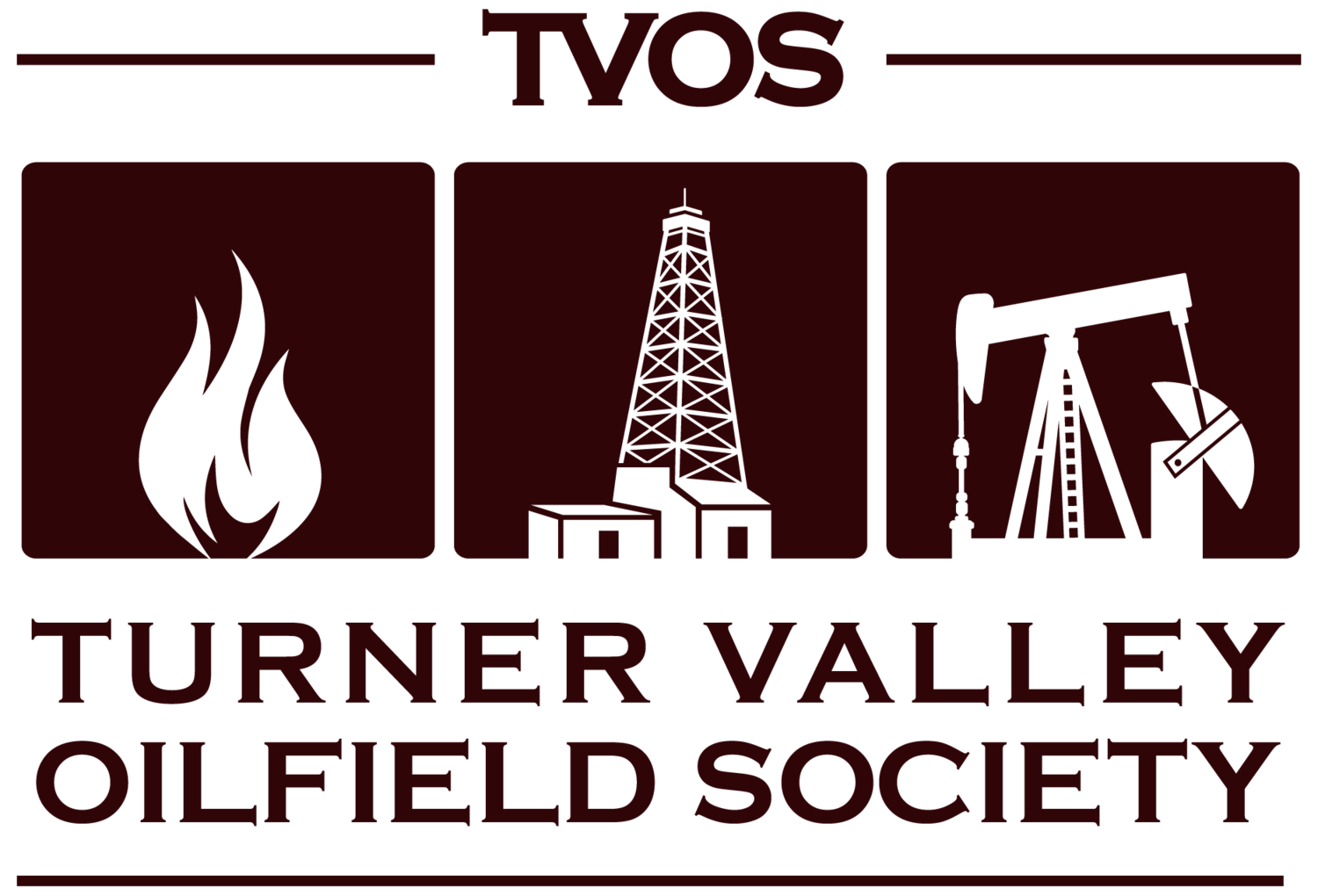Compressor Building History
Photo courtesy of CBC Still Standing
Operating like air compressors, natural gas compressors increase the pressure of the natural gas coming from the oil and gas wells in the Turner Valley field. Higher gas pressure significantly improves the recovery of valuable products (liquids) from the inlet gas stream and allows sales gas to travel greater distances through distribution pipelines. At the Turner Valley Gas Plant there were three distinct technological development periods involving compressors.
In the period from 1914 to 1920 compression was used to maximize the extraction of "gasoline" also known as naphtha, a marketable commodity, from the vapour phase which at that time had no commercial value. The first compressor was installed by Calgary Petroleum Products in a wooden frame building located near the Dingman #1 well. As noted in the Glenbow Foundation – Cataloguing Worksheet it was "The first compressor in Canada to be used for the extraction of gasoline from natural gas. Installed in 1914, by Mr. A. W. Dingman." By raising the wellhead gas pressure from the Dingman #1 and #2 wells, then suddenly dropping the pressure, the gas was auto-cooled causing liquids (aka "gasoline" or naphtha) to condense out of the gas stream. The auto-cooling (or self-refrigeration) created by this sudden pressure drop is known as the Joule-Thompson effect. These condensed liquids were then mixed with the heavier hydrocarbon liquids recovered at the wellhead thereby increasing the total volume of liquids recovered from the wellhead gas and thus maximizing income. Nothing remains of the wooden frame building which housed this compressor.
After the fire of October 1920, Royalite Oil Company succeeded Calgary Petroleum Products and proceeded to drill several more wells. Newer technology was employed to deal with higher gas production and sales. The second installation of compressors were operational from 1921 to 1925. Six compressors, driven by 60 kilowatt (80 horsepower) Clark natural gas engines, were installed by Royalite. These compressors raised field gas pressure to about 830 kilopascals (kpa) (120 psi) to push the gas through the absorption plant where the hydrocarbon liquids were separated from the natural gas. This pressure also allowed the gas to pass through the subsequent plant equipment and a 15 cm (6 inch) pipeline to Calgary. Up to 70,800 cubic metres (m3) of gas per day (2.5 million cubic feet per day) was delivered to Calgary with this equipment. In 1922 this gas was sold for 10 cents per 28.3 m3 (1000 cubic feet), about $250 per day (the liquids were worth much more). This compression facility was housed in a steel frame building similar to the old Light Plant (currently the Alberta Culture Welcoming Centre) but located near the Garage/Carpenter Shop. This compression facility became unnecessary after 1925 due to the discovery of Royalite #4 in 1924. This well produced very high pressure gas and compression was not required. Subsequently, the building was dismantled.
The third technological advance in compression at this site began in 1938. From 1925 to 1938 tremendous volumes of gas were flared because the gas market was exceedingly small while the market for liquids (gasoline/naphtha) was very large. The new compressor installation increased the pressure of the inlet gas to 2275 kpa (330 psi) pushing it through the now significantly upgraded/expanded processing facilities and into the sales gas pipeline distribution system. By comparison, later gas processing facilities operated up to 9650 kpa (1400 psi).
Construction of the current (third) compressor building began in 1938 initially housing three Cooper-Bessemer "integral" compressors. This integral design was unique because both engine and compressor pistons were driven from one crankshaft, rotating at 300 rpm. The GMV, 450/500 kW, V6 engines (600/660 horsepower) were designed to run on natural gas which was plentiful and cheap. (See the TVOS website for the Cooper-Bessemer video on this compressor design.) Wartime demand resulted in identical compressors added in 1941 (1), 1944 (2), and 1946 (1) with the final three added in 1948 for a total of ten (10). At the time, it was the largest compression facility in Western Canada. The operating conditions of relatively low discharge pressure and low rpm allowed many of these compressor units to operate over 45 years. Nine of the ten compressors were used for inlet gas compression while the tenth was reserved for high pressure reinjection (storage) of sales gas at about 6200 kpa (900 psi) during low demand summer months.
Maximum capacity was reached in January 1950 due to an exceptional cold snap when over 3.0 million cubic metres of "scrubbed" gas (105 million cubic feet) was sold to Canadian Western Natural Gas Company on one day for the Calgary and area market. The ten compressors remain housed in a steel frame building covered in uninsulated, corrugated metal cladding with abundant glass windows and ridge vents. The final dimensions of the building are 10m wide (33 feet), 61m long (201 feet) and 6.7m (22 feet) at roof peak. Open windows provided cooling in summer and steam heated registers provided warmth in winter.
Until the mid-1960s there were two people per shift assigned to this building, an operator and an oiler. The operator ensured the compressor discharge gas pressure was maintained and changed measurement charts each day. The oiler was responsible for the proper operation of the lubrication system on each compressor/engine unit. Both bore responsibility for the cleanliness of the building.
Author – A. Lambden, P.Eng.
References:
➢ Turner Valley Gas Plant Site and Building History – David Finch, March 1998
➢ Waste to Wealth A History of Gas Processing in Canada – Fred Stenson
➢ Hell's Half Acre Early Days in the Great Alberta Oil Patch – David Finch
➢ Corridors of Time – Aubrey Kerr
➢ The Treasure-Seekers The Men Who Built Home Oil – Philip Smith
➢ Turner Valley Oilfield Society historical documents
➢ Personal experience at site during plant operation


